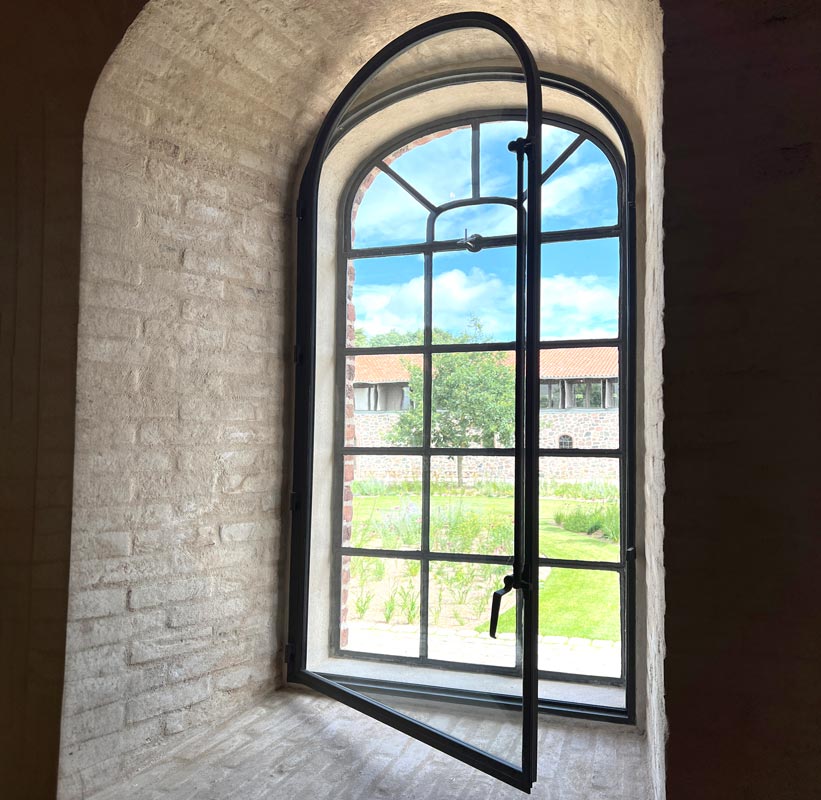The Invisible Upgrade: Why Secondary Glazing Is the Smart Choice for Your Home
When it comes to home improvements, secondary glazing often flies under the radar. Most homeowners are familiar with double glazing, and many invest in new uPVC or aluminium windows for better performance. But what if your property is listed, in a conservation area, or simply not suitable for window replacement? Enter secondary glazing: a subtle, effective, and increasingly popular solution for modern comfort without compromising classic charm.

Secondary Glazing Example
What Is Secondary Glazing?
Secondary glazing involves adding a second pane of glass inside your existing window frame. Unlike double glazing, it does not replace the original window. Instead, it creates a sealed air gap between the existing pane and the new one. This extra layer acts as a thermal and acoustic barrier, offering many of the benefits of double glazing without altering the external appearance of your home.
Secondary glazing can be fixed, sliding, hinged, or lift-out, depending on your needs and the type of window you have. It is particularly well-suited to sash windows and other traditional styles that are difficult or expensive to replace.
Why Homeowners Are Turning to Secondary Glazing
With energy costs continuing to rise and environmental concerns growing, homeowners are looking for efficient ways to reduce heat loss. Secondary glazing is gaining traction because it delivers strong results in terms of insulation and noise control, all without the disruption of a full window replacement.
One of its most significant advantages is its suitability for heritage properties. If your building is listed or located in a conservation area, planning restrictions may prevent you from installing double glazing. Secondary glazing sidesteps this issue entirely. It allows you to retain the original frames and glass while drastically improving performance.
Boosting Energy Efficiency
Windows are a common source of heat loss in any property, especially those with single-glazed or poorly sealed panes. Secondary glazing adds an insulating air gap that slows the movement of warm air out of the house and cold air in. This helps maintain a more consistent indoor temperature, reducing the need for heating and lowering your energy bills.
According to various energy efficiency studies, secondary glazing can cut heat loss by up to 60 percent in single-glazed windows. This makes it an attractive option for eco-conscious homeowners looking to improve their home's carbon footprint without embarking on costly renovations.
Say Goodbye to Unwanted Noise
Another compelling reason to consider secondary glazing is sound insulation. For those living near busy roads, railway lines, airports, or urban centres, noise pollution can be a serious issue. Secondary glazing creates an additional barrier that dampens external noise, making your home a quieter and more peaceful environment.
Unlike double glazing, which often uses two panes of similar thickness, secondary glazing can be customized with different glass types to enhance acoustic performance. Thicker or laminated glass combined with a wide air gap significantly reduces decibel levels, even in the noisiest environments.
Aesthetic and Practical Benefits
Secondary glazing is almost invisible from the outside and discreet from the inside. Modern systems are slimline, with clean finishes that blend into traditional and contemporary interiors alike. For period properties, it provides a welcome improvement in comfort without undermining the building's historic charm.
It also improves security. The extra pane and frame make it harder for intruders to break in through the window, especially when laminated or toughened glass is used. Additionally, secondary glazing can help reduce condensation by stabilizing interior glass temperatures, limiting the build-up of moisture on cold days.
Installation Made Easy
Unlike a full window replacement, secondary glazing installation is quick, non-invasive, and requires no structural changes. Most systems can be retrofitted in a single visit by an experienced installer. There's minimal disruption, no need for scaffolding, and no external mess.
This makes secondary glazing an ideal solution for homeowners who want immediate improvements without major construction work. It's also a cost-effective alternative to double glazing, with many systems coming in at a fraction of the price.
Ideal for Rented Properties and Flats
If you are a tenant or leaseholder, you might not be allowed to alter the exterior of the property. Since secondary glazing is installed internally and can often be removed without damage, it is a perfect solution. Landlords also appreciate it as a way to meet energy efficiency standards without replacing existing windows.
Making the Right Choice
There are many secondary glazing options available, from DIY kits to bespoke, professionally installed systems. Choosing the right product depends on your needs. For maximum thermal efficiency, a larger air gap is ideal. For noise reduction, acoustic-grade glass is worth the investment. Hinged panels are great for easy access, while sliding systems work well for sash windows.
Always seek advice from an experienced glazier who understands the unique requirements of your property. A proper survey and installation will ensure that you get the full benefits of secondary glazing, both in terms of performance and aesthetics.
Conclusion: A Simple Solution with Powerful Results
Secondary glazing might not be as widely known as double glazing, but it delivers big results. It improves insulation, reduces noise, enhances security, and protects heritage features—all without the need for major renovations or planning permissions. For homeowners looking to upgrade their living space in a smart, efficient way, secondary glazing is the invisible upgrade that makes a visible difference.













Great post! Glazing is such an important aspect of both aesthetics and energy efficiency in modern buildings. It’s amazing how the right glass choices can completely transform a space while also improving insulation and reducing noise. Thanks for sharing!